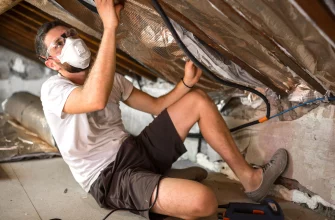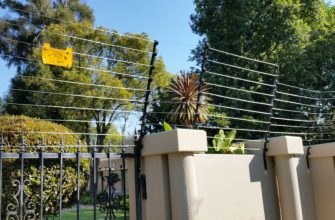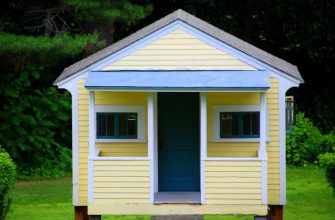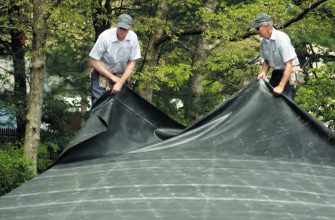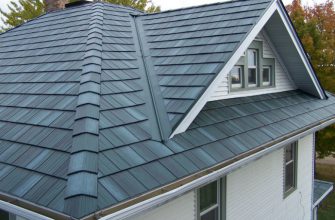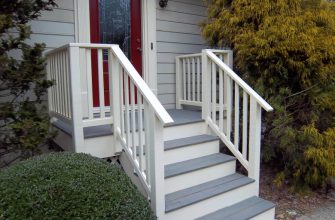Keeping your garage door properly maintained is essential for safety, security, and convenience. A well-functioning garage door system allows smooth access to your garage while protecting your home and belongings.
In this comprehensive guide, we will discuss the key aspects of garage door maintenance. We will cover the benefits of regular upkeep, help you understand the components of your garage door system, outline maintenance tasks you can perform yourself, provide tips for seasonal maintenance, troubleshoot common issues, explain when professional help is needed, overview safety considerations, and more.
Equipped with this knowledge, you will be able to keep your garage door in peak operating condition for years to come. Maintaining your garage door does require some time and effort, but is well worth it. Let’s get started!
- Benefits of Regular Maintenance
- Understanding Your Garage Door
- Components of a Garage Door System
- Identifying Different Parts of the Garage Door
- Understanding How the System Works
- Regular Maintenance Tasks
- Lubricating Moving Parts
- Checking and Replacing Weather Stripping
- Inspecting and Repairing Springs and Cables
- Testing and Adjusting Auto-Reverse Feature
- Seasonal Maintenance
- Preparing for Winter
- Weatherproofing the Garage
- Checking Insulation
- Preparing for Summer
- Maintaining Ventilation
- Inspecting for Heat Damage
- Troubleshooting Common Issues
- Identifying Noises and Their Causes
- Addressing Door Misalignments
- Dealing with Sensor Malfunctions
- Professional Maintenance and Repairs
- Knowing When to Call a Professional
- Selecting a Reliable Garage Door Service Provider
- Understanding Repair Costs and Options
- Safety and Security Measures
- Securing Your Garage
- Ensuring
- Ensuring Safe Operation for Children and Pets
- Final Thoughts on Garage Door Maintenance
Benefits of Regular Maintenance
Performing routine maintenance on your garage door system provides many advantages, including:
- Ensures smooth, reliable access to your garage.
- Prevents more serious issues from developing.
- Extends the lifespan of the various components.
- Saves money over the long run by avoiding costly repairs.
- Enhances safety by keeping sensors, springs and moving parts in good working order.
- Provides peace of mind knowing your system is secure and functioning properly.
Additionally, a well-maintained garage door just looks nicer and gives a good impression of your home. The minor time investment needed pays dividends through improved convenience, security and cost savings over time.
Understanding Your Garage Door
Components of a Garage Door System
Before performing maintenance tasks or troubleshooting issues, it helps to understand the various components that make up your garage door system and how they operate.
Identifying Different Parts of the Garage Door
Key components include:
- The door itself – Typically made of wood, steel, aluminum or fiberglass. Includes panels, tracks, rollers, hinges and struts.
- The opener – Motorized device that automates opening and closing. Consists of a motor, chain drive, wall switch and remote controls.
- The spring system – Torsion or extension springs that counterbalance the door weight to make opening/closing easier.
- Weather stripping – Seals gaps around the door to block out elements and improve insulation.
- Safety sensors – Detect objects to trigger auto-reverse if something is underneath while closing.
Understanding How the System Works
When opening manually, the torsion spring system applies upward force to counter the door’s weight as you lift it. The tracks guide the rollers so the door moves smoothly and evenly. The motorized opener takes the effort out of lifting by doing the work for you.
Sensors trigger the auto-reverse safety mechanism if something is detected while the door closes. Weather stripping blocks gaps around the door to seal in cooled/heated indoor air and prevent dust or pests getting in.
Understanding these basics helps when inspecting, maintaining or repairing your garage door system.
Regular Maintenance Tasks
To keep your garage door operating properly, there are a few routine maintenance tasks you should perform yourself on a regular basis:
Lubricating Moving Parts
Oil any rollers, bearings, pulleys and hinges that move. This prevents unnecessary wear, noise and friction that can hinder smooth operation. Use light household oil or lubricant specially made for garage doors.
Checking and Replacing Weather Stripping
Inspect weather stripping around the door and along the floor. Replace any sections that are cracked, torn or missing to maintain a good seal. Check for gaps, cracks or daylight visible around the door when closed.
Inspecting and Repairing Springs and Cables
Check torsion springs and cables for signs of wear or damage. Springs should be evenly spaced from the shaft. Replace any frayed or broken cables immediately to avoid further damage. Call a professional for any spring repairs.
Testing and Adjusting Auto-Reverse Feature
Place a solid object like a piece of wood on the ground below the door then close it. The door should automatically reverse open a few inches upon contact. Adjust sensors as needed until this safety feature works properly.
Performing these basic maintenance duties goes a long way towards extending the life of your system and ensuring safe, reliable access.
Seasonal Maintenance
In addition to regular maintenance, seasonal changes require some garage door preparation and upkeep tasks:
Preparing for Winter
Get your garage door ready for colder weather using these tips:
Weatherproofing the Garage
- Inspect weather stripping and seals around the door. Replace if needed.
- Check for gaps or rotting wood around door frame. Seal any holes or cracks.
- Clear debris, leaves, dirt and cobwebs around door area.
Checking Insulation
- Assess insulation around garage. Add extra insulation if needed.
- Consider installing insulated garage door panels if lacking insulation currently.
- Check the seal along garage floor to prevent drafts entering under the door.
This prepares your garage for colder temps, helps retain heat, and prevents snow/ice buildup issues.
Preparing for Summer
To get your garage door ready for warmer weather:
Maintaining Ventilation
- Screen garage vents but keep unblocked.
- Use exhaust fans to vent hot air if garage tends to get very warm.
Inspecting for Heat Damage
- Check door panels, seals and insulation for signs of heat damage or warping.
- Consider white/light colored door panels that reflect sunlight if dealing with heat issues.
Taking these seasonal steps helps prevent weather-related damage and ensures ideal garage temperature all year round.
Troubleshooting Common Issues
Despite your best maintenance efforts, garage door problems can still crop up. Being able to identify and fix minor issues yourself saves the hassle and cost of professional repair calls. Common problems include:
Identifying Noises and Their Causes
- Squeaking/Binding – Lack of lubrication causing friction in moving components. Oil hinges, rollers and tracks.Rattling – Debris or loose hardware. Clear debris, tighten fasteners as needed.
Banging – Door closing unevenly. Adjust tracks for proper alignment.
Grinding – Grit or dirt in components. Clean and lubricate moving parts.
Identifying the specific noise heard can point towards the underlying problem.
Addressing Door Misalignments
If your door fails to close smoothly or rubs against the tracks, misalignment is likely the cause. To realign:
- Loosen track brackets and adjust position.
- Use a level to ensure tracks are plumb and parallel.
- Confirm tracks line up with door rollers for smooth travel.
- Retighten hardware once realigned.
Dealing with Sensor Malfunctions
Safety sensor issues can prevent garage door operation. Try this:
- Check for obstruction, damage, dirt or misalignment.
- Ensure sensors face directly across at same height.
- Verify sensors are aligned and free of debris.
- Check for loose wiring connections.
- Replace sensors if unable to get working properly.
With some troubleshooting and DIY adjustments, many common issues can be quickly and easily remedied.
Professional Maintenance and Repairs
While you can perform much of your garage door upkeep yourself, certain maintenance or repair tasks do require professional expertise and equipment.
Knowing When to Call a Professional
Seek pro help for:
- Broken springs – High tension makes spring repairs extremely dangerous if not done properly.
- Bent/damaged tracks – May require special tools and skills to straighten properly.
- Major opener problems – Complex electronics best left to professionals.
- Difficulty getting door balanced – Improper adjustments can make issues worse over time.
Don’t take chances on safety or cause further damage. Calling a pro at the first signs of major problems can often save money by avoiding costlier future repairs.
Selecting a Reliable Garage Door Service Provider
When hiring a professional garage door company:
- Check reviews and complaints with Better Business Bureau.
- Verify proper licensing and insurance.
- Get multiple quotes to compare fair pricing.
- Ask about warranties on labor and parts.
This helps identify reputable companies that stand behind their work.
Understanding Repair Costs and Options
Typical garage door repairs costs range from:
- Sensor adjustment – $50 – $100.
- Weather stripping – $150+.
- Opener/motor repair – $200 – $350.
- Spring replacement – $200 – $500.
- New door install – $800+.
Discuss repair vs replacement options with your pro if issues are extensive or ongoing.
Safety and Security Measures
A properly functioning garage door enhances safety and security. Ensure yours operates reliably through:
Securing Your Garage
- Use opener encryption to block signal theft from burglars.
- Disengage automatic opener when away for extended periods.
- Consider installing motion-activated flood lights as deterrent.
Ensuring
Ensuring Safe Operation for Children and Pets
- Keep remote controls/wall buttons out of reach of kids.
- Install a laser garage door sensor to detect movement.
- Teach children to avoid the door area and path of the door.
- Check for pets/objects underneath before closing door.
Taking basic precautions enhances safety for kids and pets around your automated garage door.
Final Thoughts on Garage Door Maintenance
Proper garage door maintenance requires an ongoing investment of time and effort. But consistently performing key tasks like lubricating components, testing sensors, weatherproofing seals, and adjusting alignments extends the lifespan of your system for years of smooth, reliable access.
Preventative upkeep also enhances safety and security, while avoiding more costly repairs down the road. And being able to troubleshoot minor issues yourself further saves on unnecessary service calls.
While major repairs still require turning to a professional, you can handle much of the basic upkeep needed to keep your garage door in good working order yourself. Taking the time for regular maintenance goes a long way towards maintaining the perfect garage!


